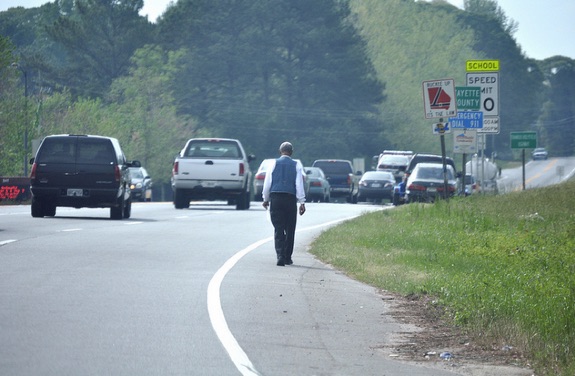
Traffic fatalities in the U.S. increased by 14 percent through June of this year compared to the first six months of 2014, and serious injuries jumped by 30 percent, according to the National Safety Council [PDF]. At the current rate, the group says, nationwide road deaths would top 40,000 for the first time since 2007.
The NSC announced Monday that, by its estimates, nearly 19,000 people died in traffic through June, and more than 2.2 million were seriously injured.
Fatalities rose in 34 states. Several states saw increases of 20 percent or more -- fatalities were up 59 percent in Oregon, and between 26 and 29 percent in Georgia, Florida, and Minnesota. Not every state had six months of data, so in all likelihood the numbers are higher than what the NSC was able to report.
Deborah Hersman, president of NSC, told the AP the increases can’t be accounted for by vehicle miles traveled.
The nation's driving steadily increased for 15 consecutive months through May, the Transportation Department said in July. Americans drove 1.26 trillion miles in the first five months of 2015, passing the previous record, 1.23 trillion, set in May 2007.
However, the cumulative increase in vehicle mileage this year through May is 3.4 percent, far less than the 14 percent increase in deaths, Hersman noted. Also, the estimated annual mileage death rate so far this year is 1.3 deaths per 100 million vehicle miles traveled, up from the preliminary 2014 rate of 1.2 deaths.
The AP cited higher speed limits and driver distraction as potential factors, and said the NSC reported earlier this year that 25 percent of all crashes in the U.S. involve cellphone use.
"For many years people have said, 'If distraction is such a big issue, why don't we see an increase in fatal crash numbers?’” said Hersman. “Well, we're seeing increasing fatal crashes numbers, but I think it's complicated to tease out what that is due to.”
Some answers may later be borne out by more detailed data. In addition to the prevalence of driver distraction, unknowns at this point include how many crash victims were motor vehicle occupants and how many were struck while walking or biking; how many drivers were drunk or otherwise impaired; and how many serious crashes occurred in cities versus rural areas.
Whatever the data eventually reveals, the obvious takeaway should be that the U.S. is not doing enough to improve road safety. Countries that are serious about minimizing traffic violence have policies that, in the words of Daniel Hertz at City Observatory, “prioritize safe mobility.” That means providing people alternatives to driving and building streets that allow them to travel on foot and by bike without risking their lives. The U.S. Congress, meanwhile, just passed a transportation funding bill called the DRIVE Act.
Given that we wage war on safer streets, blame children for collisions, and write off virtually all crashes as unpreventable accidents, it’s no wonder the U.S. has a higher road death rate than many countries we consider “underdeveloped.” The big news isn’t that traffic deaths might top 40,000 for the first time in years. The story is we would consider a somewhat lower number to be acceptable.





